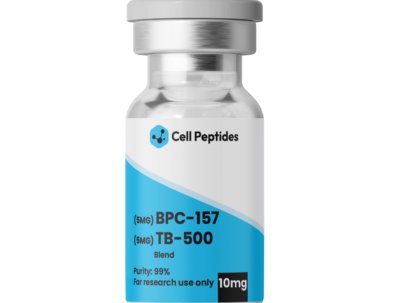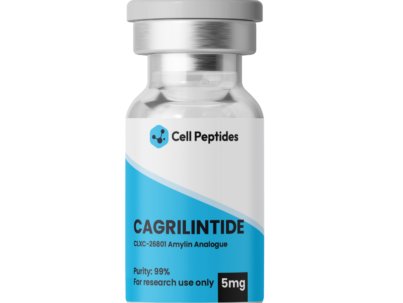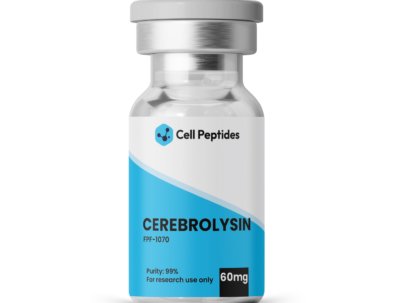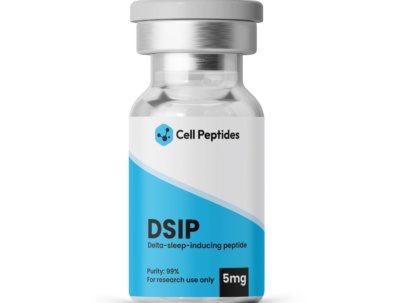- Fast shipping in Europe & USA
- Made in ISO 9001:2015 certified lab
- info@cellpeptides.com
Some peptides are being studied for their ability to reduce inflammation, support immune balance, and aid in tissue repair. These compounds may affect immune signaling and are intended strictly for research use, not for self-administration or medical treatment.
Anti-inflammatory peptides are research compounds being studied for their ability to reduce inflammation, manage oxidative stress, and modulate immune system responses. They are of particular interest in laboratory models involving chronic inflammation, neuroinflammation, tissue repair, and autoimmune conditions.
These peptides don’t all work the same way. Some help regulate inflammatory cytokines like TNF-alpha and IL-6. Others reduce oxidative damage by boosting antioxidant defenses. A few even act on mitochondria to support energy balance during cellular stress. Together, they offer a diverse toolkit for studying how inflammation can be controlled at the molecular level.
Researchers are exploring these peptides in relation to arthritis, nerve injury, brain inflammation, muscle damage, and more. Their effects are being observed in controlled environments to better understand how inflammation develops and how it might be resolved.
Important Note
All peptides mentioned in this category are intended for laboratory research use only. Any references to biological effects are drawn from scientific literature and are not intended to suggest human use or medical application.
Anti-inflammatory peptides are short chains of amino acids that signal cells to calm inflammation, speed up tissue repair, or support immune balance. These compounds are being studied for their roles in regulating overactive immune responses and reducing oxidative stress in chronic conditions.
In research settings, they’re grouped by how they work:
Lab interest in these peptides is growing fast, especially for research related to gut inflammation, brain fog, arthritis, and skin repair. Each peptide offers a different angle in the broader study of inflammation and its long-term impact on health.
Anti-inflammatory peptides work through different molecular pathways depending on their structure and target tissue. Some regulate immune responses, others heal damaged tissue, and many support cells under oxidative stress. Here’s how they function in lab models:
Peptides in this group are studied for their ability to balance immune signaling and reduce chronic inflammation:
These peptides are known for accelerating wound healing and tissue remodeling:
This group focuses on protecting cells under metabolic stress and improving energy efficiency:
These peptides target inflammation in the brain and nervous system:
Anti-inflammatory peptides have been widely studied in lab and preclinical models. Most findings come from rodent or cell-based systems, with a focus on chronic inflammation, tissue injury, or metabolic dysfunction. Here’s a summary of what the research shows:
These findings are based on lab and preclinical data, and are intended for research-context use only.
While anti-inflammatory peptides are showing promise in preclinical studies, none are FDA-approved for treating inflammation or related medical conditions in humans. These compounds are still under investigation in laboratory and early-stage clinical models.
Thymosin Alpha-1 is one exception; it has been approved in select countries for use in hepatitis and immune-related conditions. However, it is not universally approved and remains research-only in many jurisdictions.
In lab studies, peptides in this category have shown immune-modulating and hormone-influencing properties. Some models have reported mild side effects such as gastrointestinal discomfort, fatigue, or temporary immune shifts. These effects are often dose-dependent and vary by peptide.
Researchers must handle all peptides under sterile, controlled lab conditions. This includes using certified equipment, maintaining accurate dosing logs, and designing experiments specific to the peptide’s known mechanism of action. Storage, reconstitution, and delivery should follow best practices to preserve peptide integrity.
Important: These peptides are intended strictly for laboratory research use only. Any discussion of biological effects refers to scientific studies and is not intended to suggest medical or human application.
The following peptides have gained interest in inflammation-related research for their distinct mechanisms and tissue-specific effects. Each is studied for its ability to modulate immune responses, reduce oxidative stress, or support recovery from injury.
Widely studied for its role in immune regulation, Thymosin Alpha-1 helps balance cytokine levels and supports adaptive immune function.
Known for its role in gut and soft tissue repair, BPC-157 has been studied in GI inflammation, joint recovery, and wound healing models.
Supports tendon and muscle repair, and has been investigated for reducing systemic inflammatory markers in injury models.
Targets mitochondrial inflammation and supports metabolic resilience in obesity and stress models.
Both peptides are neuroactive and studied for reducing brain inflammation, especially in models of stress and anxiety.
Investigated for its ability to reduce mitochondrial ROS and preserve cell integrity during inflammation.
A neuroprotective peptide studied in brain injury and neuroinflammatory models with promising results in reducing glial activation.
For reliable results, it’s important to handle anti-inflammatory peptides with precision and consistency. Always start by selecting research-grade peptides that come with a Certificate of Analysis and purity of 98% or higher.
Reconstitute peptides using bacteriostatic water or pH-balanced sterile buffers, depending on the compound’s solubility profile. Gently swirl, never shake, to preserve peptide integrity. Once mixed, store solutions in a refrigerator (2–8 °C) and use within 5–7 days. For long-term storage, keep the lyophilized (freeze-dried) form at –20 °C in a dark, airtight container.
When designing protocols, use outcome measures that match the peptide’s function. Common methods include:
Be sure to document all dosages, timing schedules, tissue targets, and observed effects to maintain reproducibility and ensure scientific accuracy.
These peptides are intended for research use only. Always follow institutional safety and ethical guidelines.
Yes. Stacking peptides such as BPC-157 with MOTS-c is common in multi-pathway studies. However, combinations must be tested and validated within each specific model.
Most peptides dissolve well in bacteriostatic water. Some, like NAD+, may require a mildly acidified solution to fully dissolve and remain stable.
Typical markers include cytokine levels (e.g., IL-6, TNF-α), CRP, oxidative stress markers (ROS), and tissue histology for inflammation scoring.
Yes. Peptides like SS-31 and MOTS-c have been shown to modulate mitochondrial gene activity in vitro, impacting energy balance and inflammatory responses.
All in all, anti-inflammatory peptides provide a versatile toolkit for studying immune responses, tissue regeneration, and oxidative stress in lab settings. Compounds like Thymosin Alpha-1, TB-500, MOTS-c, and SS-31 are widely researched across models of metabolic dysfunction, neuroinflammation, and autoimmune conditions.
These peptides are strictly for laboratory research use only. Always follow proper safety guidelines, storage practices, and documentation standards when working with them.
To explore high-purity peptides for your experiments, visit the CellPeptides Anti-inflammatory Peptides Collection for full technical specs and ordering options.
Anti-inflammatory Peptides
Some peptides are being studied for their ability to reduce inflammation, support immune balance, and aid in tissue repair. These compounds may affect immune signaling and are intended strictly for research use, not for self-administration or medical treatment.
Anti-inflammatory peptides are research compounds being studied for their ability to reduce inflammation, manage oxidative stress, and modulate immune system responses. They are of particular interest in laboratory models involving chronic inflammation, neuroinflammation, tissue repair, and autoimmune conditions.
These peptides don’t all work the same way. Some help regulate inflammatory cytokines like TNF-alpha and IL-6. Others reduce oxidative damage by boosting antioxidant defenses. A few even act on mitochondria to support energy balance during cellular stress. Together, they offer a diverse toolkit for studying how inflammation can be controlled at the molecular level.
Researchers are exploring these peptides in relation to arthritis, nerve injury, brain inflammation, muscle damage, and more. Their effects are being observed in controlled environments to better understand how inflammation develops and how it might be resolved.
Important Note
All peptides mentioned in this category are intended for laboratory research use only. Any references to biological effects are drawn from scientific literature and are not intended to suggest human use or medical application.
Anti-inflammatory peptides are short chains of amino acids that signal cells to calm inflammation, speed up tissue repair, or support immune balance. These compounds are being studied for their roles in regulating overactive immune responses and reducing oxidative stress in chronic conditions.
In research settings, they’re grouped by how they work:
Lab interest in these peptides is growing fast, especially for research related to gut inflammation, brain fog, arthritis, and skin repair. Each peptide offers a different angle in the broader study of inflammation and its long-term impact on health.
Anti-inflammatory peptides work through different molecular pathways depending on their structure and target tissue. Some regulate immune responses, others heal damaged tissue, and many support cells under oxidative stress. Here’s how they function in lab models:
Peptides in this group are studied for their ability to balance immune signaling and reduce chronic inflammation:
These peptides are known for accelerating wound healing and tissue remodeling:
This group focuses on protecting cells under metabolic stress and improving energy efficiency:
These peptides target inflammation in the brain and nervous system:
Anti-inflammatory peptides have been widely studied in lab and preclinical models. Most findings come from rodent or cell-based systems, with a focus on chronic inflammation, tissue injury, or metabolic dysfunction. Here’s a summary of what the research shows:
These findings are based on lab and preclinical data, and are intended for research-context use only.
While anti-inflammatory peptides are showing promise in preclinical studies, none are FDA-approved for treating inflammation or related medical conditions in humans. These compounds are still under investigation in laboratory and early-stage clinical models.
Thymosin Alpha-1 is one exception; it has been approved in select countries for use in hepatitis and immune-related conditions. However, it is not universally approved and remains research-only in many jurisdictions.
In lab studies, peptides in this category have shown immune-modulating and hormone-influencing properties. Some models have reported mild side effects such as gastrointestinal discomfort, fatigue, or temporary immune shifts. These effects are often dose-dependent and vary by peptide.
Researchers must handle all peptides under sterile, controlled lab conditions. This includes using certified equipment, maintaining accurate dosing logs, and designing experiments specific to the peptide’s known mechanism of action. Storage, reconstitution, and delivery should follow best practices to preserve peptide integrity.
Important: These peptides are intended strictly for laboratory research use only. Any discussion of biological effects refers to scientific studies and is not intended to suggest medical or human application.
The following peptides have gained interest in inflammation-related research for their distinct mechanisms and tissue-specific effects. Each is studied for its ability to modulate immune responses, reduce oxidative stress, or support recovery from injury.
Widely studied for its role in immune regulation, Thymosin Alpha-1 helps balance cytokine levels and supports adaptive immune function.
Known for its role in gut and soft tissue repair, BPC-157 has been studied in GI inflammation, joint recovery, and wound healing models.
Supports tendon and muscle repair, and has been investigated for reducing systemic inflammatory markers in injury models.
Targets mitochondrial inflammation and supports metabolic resilience in obesity and stress models.
Both peptides are neuroactive and studied for reducing brain inflammation, especially in models of stress and anxiety.
Investigated for its ability to reduce mitochondrial ROS and preserve cell integrity during inflammation.
A neuroprotective peptide studied in brain injury and neuroinflammatory models with promising results in reducing glial activation.
For reliable results, it’s important to handle anti-inflammatory peptides with precision and consistency. Always start by selecting research-grade peptides that come with a Certificate of Analysis and purity of 98% or higher.
Reconstitute peptides using bacteriostatic water or pH-balanced sterile buffers, depending on the compound’s solubility profile. Gently swirl, never shake, to preserve peptide integrity. Once mixed, store solutions in a refrigerator (2–8 °C) and use within 5–7 days. For long-term storage, keep the lyophilized (freeze-dried) form at –20 °C in a dark, airtight container.
When designing protocols, use outcome measures that match the peptide’s function. Common methods include:
Be sure to document all dosages, timing schedules, tissue targets, and observed effects to maintain reproducibility and ensure scientific accuracy.
These peptides are intended for research use only. Always follow institutional safety and ethical guidelines.
Yes. Stacking peptides such as BPC-157 with MOTS-c is common in multi-pathway studies. However, combinations must be tested and validated within each specific model.
Most peptides dissolve well in bacteriostatic water. Some, like NAD+, may require a mildly acidified solution to fully dissolve and remain stable.
Typical markers include cytokine levels (e.g., IL-6, TNF-α), CRP, oxidative stress markers (ROS), and tissue histology for inflammation scoring.
Yes. Peptides like SS-31 and MOTS-c have been shown to modulate mitochondrial gene activity in vitro, impacting energy balance and inflammatory responses.
All in all, anti-inflammatory peptides provide a versatile toolkit for studying immune responses, tissue regeneration, and oxidative stress in lab settings. Compounds like Thymosin Alpha-1, TB-500, MOTS-c, and SS-31 are widely researched across models of metabolic dysfunction, neuroinflammation, and autoimmune conditions.
These peptides are strictly for laboratory research use only. Always follow proper safety guidelines, storage practices, and documentation standards when working with them.
To explore high-purity peptides for your experiments, visit the CellPeptides Anti-inflammatory Peptides Collection for full technical specs and ordering options.







